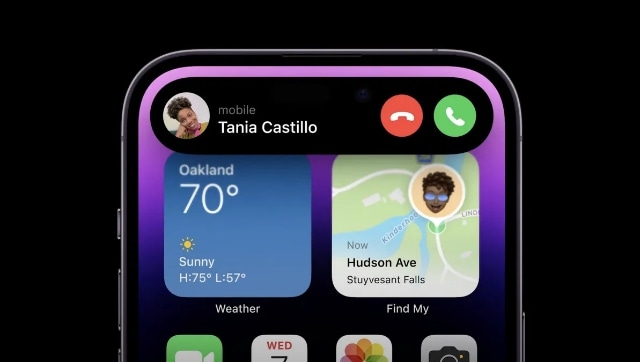Every time Apple launches a new iPhone or a new version of the iOS, they claim that some of the features that they have introduced with the phone are ‘revolutionary’ and ‘groundbreaking.’ While technically, this may be true only for the Apple eco-system, more often than not, a lot of these features have already appeared in some Android device, or the other.

We take a look at some of the new features in the iPhone 14 series and iOS16 that are being touted as revolutionary but have been seen in Android smartphones from a number of other brands. However, we cannot deny that the way Apple implements these features, is what sets them apart from Android.
Dynamic refresh rate or ProMotion
Android devices have had dynamic refresh rate for years now. In fact, the concept has been around in Android devices for so long, that even budget smartphones have started offering this feature. We often see smartphones costing less than Rs 20,000 offer displays that come with a 120Hz refresh rate. Obviously, these displays do not always run at the frequency, mainly because it would destroy a device’s battery life. The OnePlus 9 Pro was one of the first major Android flagships to adopt the ability to dial as far down as 1Hz to save on battery life.
RAW photos
Apple’s ProRAW feature basically means that you get to use the entire 48MP sensor, without pixel binning. It allows users to click highly editable, lossless photos.
Normally, smartphone cameras use pixel binning to combine a number of adjacent pixels to create one large pixel. This way, they improve the image quality by eliminating noise, especially when the lighting isn’t optimal.
A number of different smartphones allow you to shoot in this mode, although, most of them generate a JPEG version of the image that you just shot. Samsung too has this feature, but it also allows you to shoot lossless RAW photos, just like a DLSR can. For Samsung devices, you need to enable this option in the camera settings.
Crash Detection
Google’s Pixel lineup was one of the first smartphones to offer the Crash Detection feature. The feature is a part of the Personal Safety app, which is still exclusive to Pixel devices. Just like Apple’s Crash Detection, it lets you set up an Emergency SOS feature that can dispatch for safety and share your real-time location when you’re in an accident. You also get the option to turn on automatic car crash detection. If you don’t respond within an allotted amount of time, your Pixel smartphone will call the local emergency services, automatically.
Always-on display
Well, this is where things get a little tricky. Samsung introduced the first always-on display for an Android device, back in 2016, with the Galaxy S7. Ever since then, this feature has become a mainstay of Android devices, with even budget smartphones providing this feature. Apple, however, has implemented the always-on display in a rather unique manner. While Android devices usually just show some texts and icons as part of their always-on displays, the iPhone will continue to show the lock screen wallpaper, a little dimmed than before but never totally shuts off the screen. The feature is enabled by a new 1Hz refresh rate and several ‘power-efficient technologies’ to preserve battery life.
Lock screen widgets
Android actually supported lock screen widgets long before the iPhone did. It was officially added way back in 2012 with Android 4.2 Jelly Bean. However, the feature was removed two versions later with Android 5.0 Lollipop. With that being said, there are third-party apps that do allow users to set up lock screen widgets.
Regardless, both iOS and Android haven’t done a great job in implementing lock screen widgets. The widgets themselves, in both Android and iOS, are limited in functionality, and more often than not, these widgets act like mere shortcuts to the app.
Autofocusing front-camera
The Cupertino-based tech giant isn’t the first company to add autofocus to selfies. Google was the first smartphone maker who added front-facing selfie autofocus to their devices. It is a feature that has been there on Android smartphones for years now. The Pixel 3 XL had this feature back in 2018 before dropping it due to costs. Samsung’s flagship smartphones have had selfie autofocus cameras for years now. The latest Galaxy S22 has a selfie autofocus camera, for example.
Action mode or image stabilisation in videos
The Action mode in the iPhone 14 series lets users shoot a smooth video that automatically adjusts to shakes, motion and vibrations without needing a gimbal. However, Samsung already offers the Super Steady feature to shoot videos on its flagship Galaxy smartphones for quite some time. Samsung’s technology uses optical and digital stabilisation to keep your videos looking smooth.
Moreover, Vivo added a mechanical gimbal system to one of its devices in 2020. The recently launched introduced Asus Zenfone 9 also uses a gimbal camera system with six-axis stabilisation.
from Firstpost Tech Latest News https://ift.tt/zVH7Mih







No comments:
Post a Comment